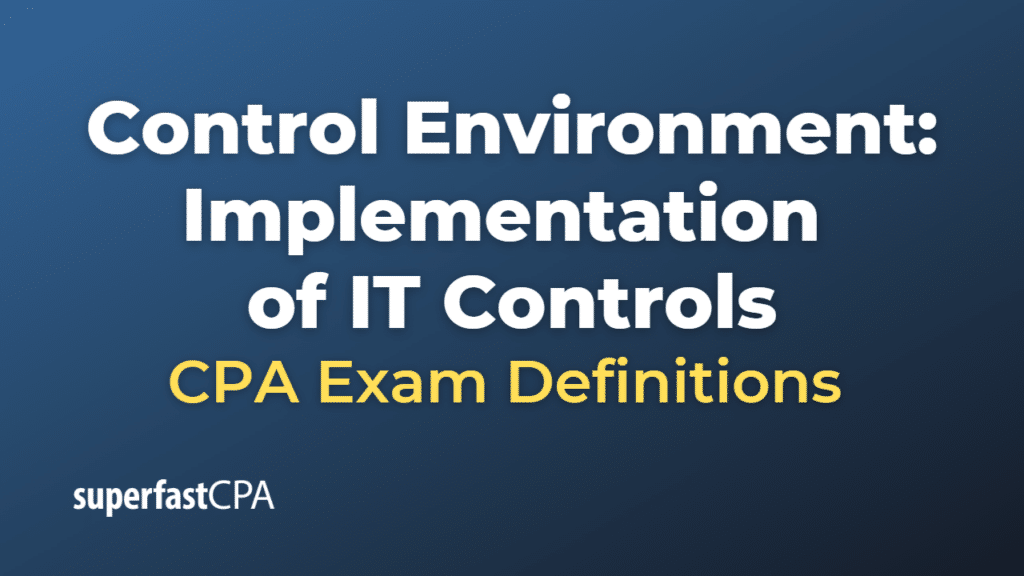Control Environment: Implementation of IT Controls
The implementation of IT controls in an entity’s control environment involves translating the control design into practical measures that help ensure the confidentiality, integrity, and availability of the organization’s information systems. Key elements of IT control implementation include:
- Documentation: Documenting IT control policies, procedures, and processes clearly and comprehensively, ensuring that all relevant stakeholders have access to the necessary information.
- Control execution: Ensuring that control activities are executed consistently and effectively across the organization, in line with the established policies and procedures.
- Training and awareness: Providing employees with the necessary training and resources to understand their roles and responsibilities in maintaining a secure IT environment, as well as promoting awareness of IT security risks and best practices.
- Monitoring and testing: Regularly reviewing the performance of IT controls to ensure their effectiveness, identify gaps, and detect any potential issues or vulnerabilities. This may include ongoing monitoring activities, periodic testing, or independent assessments such as internal or external audits.
- Change management: Establishing a structured process for managing changes to IT systems, applications, and infrastructure, including documentation, approval, testing, and implementation. Effective change management helps minimize the risk of introducing new vulnerabilities or disrupting operations.
- Incident response and recovery: Developing and maintaining a plan for responding to and recovering from IT security incidents, such as data breaches, malware infections, or system failures. This includes communication protocols, escalation procedures, and disaster recovery plans to restore systems and minimize the impact on the organization.
- Continuous improvement: Periodically reviewing and updating IT controls to adapt to changes in the organization’s risk environment, technology landscape, or regulatory requirements. This may involve identifying and implementing new controls, updating existing controls, or decommissioning controls that are no longer necessary.
- Integration with other controls: Ensuring that IT controls













